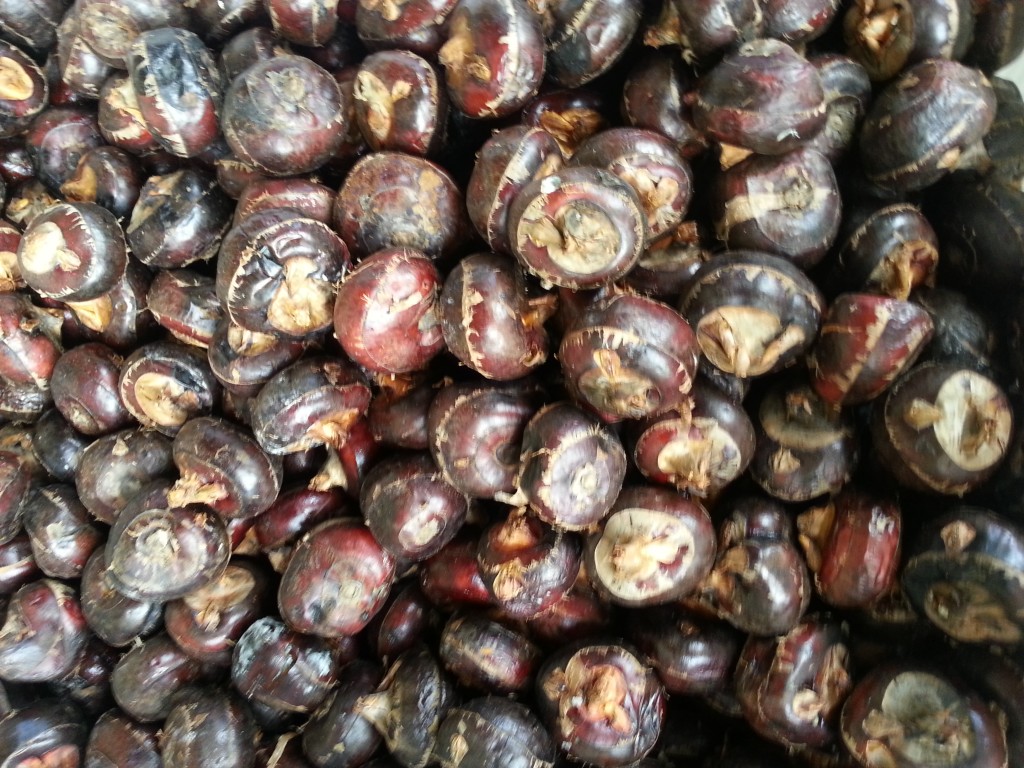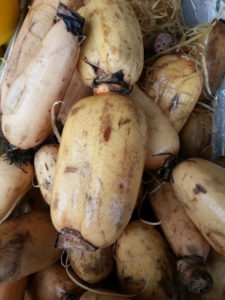Water Chestnuts/Apulid

Water Chestnuts/Apulid (Eleocharis dulcis) is one of my favorite ingredients in cooking stir fry dishes. A mix of vegetables like snow peas, ginger, green bell peppers, carrots, celery with sesame oil will go well with water chestnuts. This mix we call chop suey can be used to top noodles or rice.
Water chestnuts or apulid, came from a family of grass called sedge. They are grown in marshes and sometimes in rice paddies. The nut they refer to is the corm which resembles chestnuts because of its color and shape. The inside of the corm is white and crunchy. The taste is bland on the sweeter side. Its like eating fresh jicama but not too juicy.
I remember eating apulid when I was growing up in the Philippines. We buy them already boiled and eat them as snacks like peanuts. The apulid I know is not as big as the Chinese water chestnuts though. They are smaller compared to the variety I see in the marketplace. Although I enjoyed eating them, I never really saw a growing plant of the water chestnuts in the Philippines. I was able to give a chance to grow them when a Chinese friend gave me some plant starters. I was excited to plant them and anticipate how much precious morsels they will give me. The grass-like plant grew but not very well. They needed a special space to grow, like maybe a barrel filled with water to imitate their growing conditions in marshes. I must say it was a good experience for me because I never saw this plant before and I’m just happy to try and grow them myself. Maybe when I have a big farm of my own I will dedicate a portion of the farm just for growing water chestnuts. Not only they are my favorite food but they are also healthy for you.
Water chestnuts are indigenous to China and Southeast Asia. They are available fresh in Chinatown or canned, either whole or diced. The water chestnuts are crunchy when fresh and stay crunchy when cooked just like the lotus root. They are good source of carbohydrates, fiber and potassium and also B-vitamins. and other trace minerals.
My favorite recipe using water chestnuts is scallops with mix vegetables like broccoli, choi sum, carrots, celery and green onions. I always order this when we go to my favorite Chinese restaurant in Salt Lake. They make delicious food and almost always using the water chestnuts in most of their stir fries recipes.
